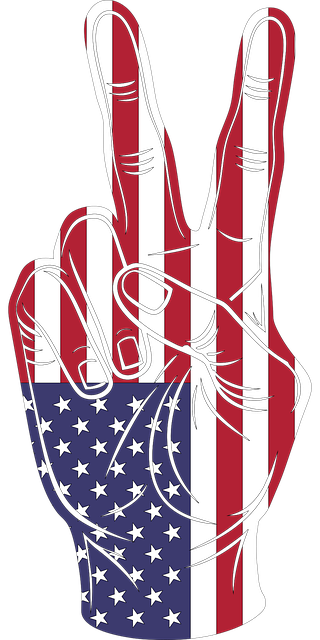The American Eagle and flag are deeply symbolic national emblems that reflect the United States' identity, values, and history. The eagle, with its dynamic stance, represents the nation's dual ideals of peace and military readiness, embodying America's resilience and aspirations. Its flight signifies overcoming challenges and achieving great heights, akin to the opportunities for success that America offers its citizens. The eagle's vigilant gaze symbolizes forward-thinking and determination. The flag, with its iconic design of reds, whites, and blues, has been present at every key historical moment in U.S. history and stands for unity in diversity, liberty, justice, and representative government. Originating from the 1777 flag with thirteen stars and stripes, which has evolved to fifty, the flag embodies the United States' transformation from a collection of colonies to a diverse nation. Together, the American Eagle and flag are a testament to America's rich heritage, dynamic cultural tapestry, and enduring values, serving as unifying symbols that have shaped and continue to guide the country's journey forward.
explore the enduring symbols of American identity: the American Eagle and U.S. flag, artifacts rich in heritage and values. This article delves into the profound symbolism behind these national icons, their historical significance, and how they continue to embody the unity and diversity that characterize the United States. From the majestic flight of the eagle to the colors and stripes of the flag, understand how these elements represent freedom, strength, and the American ethos. Join us as we honor the legacy and evolution of these symbols that have stood the test of time, capturing the essence of what it means to be an American.
- The Symbolism of the American Eagle: A Soaring Emblem of Freedom and Strength
- The Enduring Legacy of the U.S. Flag: History, Significance, and Evolution
- Unity in Diversity: How the Eagle and Flag Embody American Heritage and Values
The Symbolism of the American Eagle: A Soaring Emblem of Freedom and Strength

The American Eagle, a potent emblem gracing the nation’s coat of arms and the reverse side of its currency, stands as a symbol of freedom and strength that resonates deeply with the American identity. This majestic bird, with its wings outstretched and talons gripping an olive branch and arrows, embodies the dual nature of peace and preparedness that is central to U.S. heritage. The eagle’s soaring flight signifies the country’s ability to rise above challenges and achieve great heights, reflecting the boundless opportunities that the United States offers its citizens. Its gaze, fixed ahead with unwavering focus, captures the spirit of foresight and determination that has historically propelled America forward.
Intrinsically linked to this avian symbol is the American flag, a cloth of stars and stripes that has flown over every significant event in U.S. history. The flag’s reds, whites, and blues, inspired by the country’s colonial origins, have come to represent unity and diversity under one nation. It is a living testament to the ideals upon which the United States was founded: liberty, justice, and a government of the people, by the people, and for the people. Together with the American Eagle, the flag stands as a beacon of American values, reminding all who see it of the country’s rich past and the promise of its future.
The Enduring Legacy of the U.S. Flag: History, Significance, and Evolution

The U.S. flag, often accompanied by the emblematic American Eagle, stands as a potent symbol of American heritage, history, and national identity. Its origins trace back to the late 18th century when the first official flag, featuring thirteen stars and thirteen stripes, was adopted in 1777. This flag, which has undergone several revisions, now comprises fifty stars representing the fifty states of the Union, and thirteen stripes symbolizing the original colonies that declared independence from British rule. The flag has witnessed and represented the nation’s evolution through key historical events, from the American Revolution to the present day. It serves as a collective emblem of unity, freedom, and pride for Americans across the country.
The American Eagle, a powerful image often depicted on the national flag, carries its own significance. It symbolizes strength, freedom, and courage, reflecting the values upon which the nation was founded. The eagle’s presence on the flag underscores the country’s commitment to these principles. Over time, the design of the flag and the representation of the eagle have evolved, with the latest official design codified by federal law. Together, the flag and the American Eagle represent a living legacy, an enduring testament to the nation’s history and its ongoing journey as a country. The evolution of the flag, marked by the addition of new stars and stripes, parallels the growth and transformation of the United States, capturing the essence of its dynamic heritage.
Unity in Diversity: How the Eagle and Flag Embody American Heritage and Values

The American Eagle and flag are potent symbols that together encapsulate the unity in diversity inherent to the United States’ heritage and values. The eagle, a powerful and majestic creature, soaring high above the nation’s landscapes, is a fitting representation of freedom and strength. It stands as a singular emblem that flies over a country composed of myriad cultures, beliefs, and backgrounds. This bird of prey, with its keen eyesight and broad wingspan, captures the essence of vigilance and resilience that defines American resolve. Meanwhile, the flag, with its red, white, and blue hues, unfurls as a banner of unity, symbolizing the ideals upon which the nation was founded: liberty, justice, and equality. Each stripe and star is not merely a mark of identity but a testament to the collective spirit of Americans from all walks of life. The flag’s design, often seen waving in unison or displayed side by side with images of the eagle, represents the harmony that exists within the country’s diversity, illustrating that together, these symbols stand for the American heritage and the values it upholds. They are a daily reminder to citizens and visitors alike of the unity and shared identity that bind the country, transcending individual differences and uniting people under a common banner.
